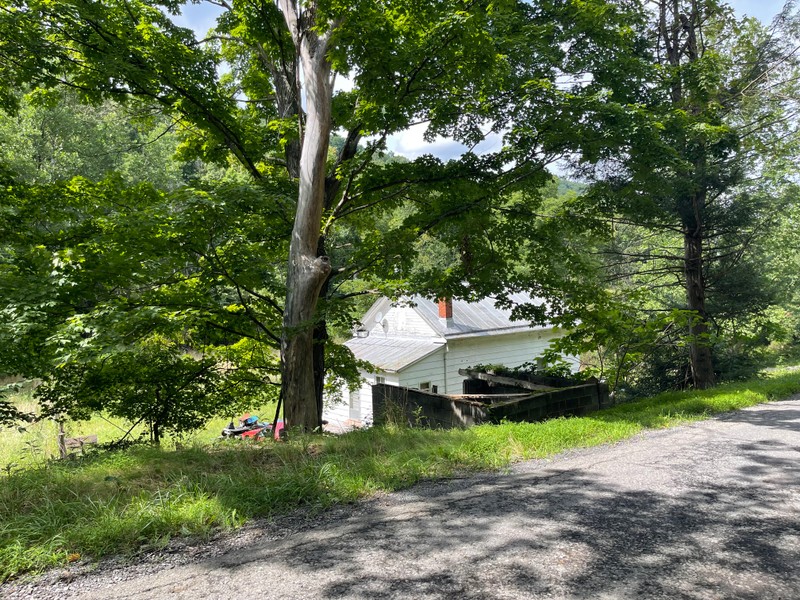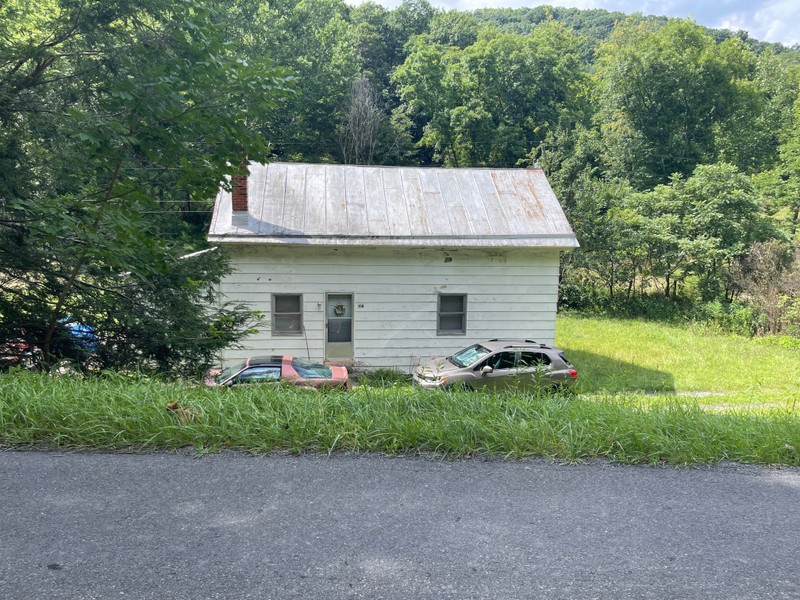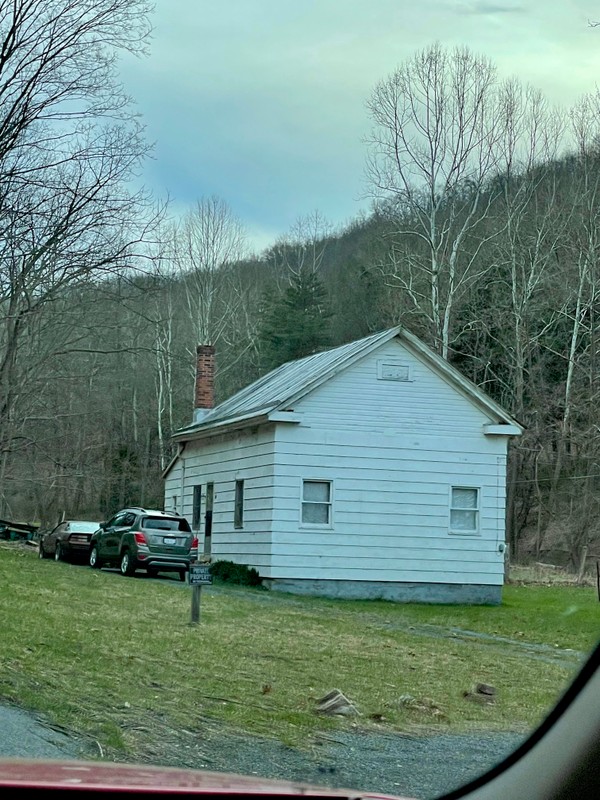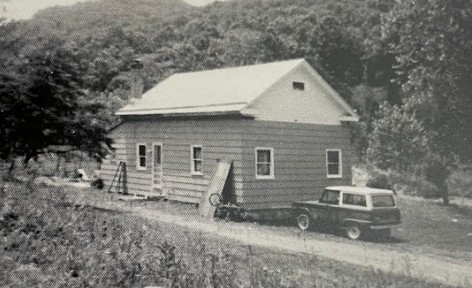Frosty Hollow School (1882 - 1957)
Introduction
Text-to-speech Audio
PRIVATE PROPERTY. EXERCISE CAUTION AS YOU OBSERVE FROM THE ROAD.
From schoolhouse to family home, this school has a long history within its walls. The Frosty Hollow School opened in 1882 and was a center of activity for this community. The structure before you has been a school, a church, a theater, and an event space. As was the norm at the time, every morning would start with the pledge of allegiance, the Lord’s prayer, and saying grace.
This is a Mountain Heritage Trails project made possible through the support of the Hardy County Convention & Visitors Bureau, the Appalachian Forest National Heritage Area AmeriCorps program, and the West Virginia University Fulcrum Project.
Heritage Trail Project Coordinator: Shefa Nola Benoit
Researchers: MaryAnn Steinmiller & Shefa Nola Benoit
Images
Frosty Hollow Roadside

Frosty Hollow Front View

Frosty Hollow Rear View

Frosty Hollow School

Backstory and Context
Text-to-speech Audio
The building before you is not the same structure that opened in 1882. The first school was a one-room framed building with two windows on both sides and inside was full of two seated desks, a teacher's desk with a chair, and a potbelly stove used for heating. The Frosty Hollow School suffered a fire in 1917 and the building burned to the ground. Soon after the fire, the school was rebuilt into the building you see today. It taught grades one through eight. Since the closing of its doors, it has become a residential home.
The school did not have a playground, but they played ball, fox and goose, and around Christmas and Halloween they always had plays and parties. There were also many spelling bees, country field days, festivals, and on the last day of school, a picnic was held and all of the parents were invited. The school did not have punishments, but for “mischievous students,” they had to learn a poem and get up in front of the class to recite it.
Cecil Smith attended Frosty Hollow School when he was a child around 1920. He can be seen in the attached photo, he is the “youngster who is center-front in the picture.” He remembers his days within the walls of the school fondly. He talked about the potbelly stove and how the bigger children were supposed to stand in the “crisp air while the primer boys and girls got the heat.” The children shared one toilet—the girls went first and then the boys. It was not until the last year that he attended the school that the Board of Education saw the need for another toilet so a new one was built for the boys. The students also carried their water—it came from a spring at Sarah Weatherholtz’s house. Smith said by the time he and a fellow classmate would bring back the water, the students had “forgotten they were thirsty.” When he was in school, enrollment was twenty-two with an even number of boys and girls.
In 1932, the school hosted a program to honor George Washington. The program encompassed the hanging of Washington’s portrait, the singing of America, a three-act play, a flag drill, singing of the Star-Spangled Banner, and a flag salute. The entire community was invited to attend. In the 1940s the school was also used to hold church services and to teach Sunday school. The building ceased to be a school in 1957.
Cite This Entry
Benoit, Shefa Nola. "Frosty Hollow School (1882 - 1957)." Clio: Your Guide to History. August 10, 2023. Accessed April 2, 2025. https://theclio.com/entry/155529
Sources
“A Past to Remember, A Future to Mold.” 24
Moorefield Examiner. “George Washington Bi-centennial Program.” February 25, 1932, 2.
Loose newspaper article from the library - Folder for Frosty Hollow School
Loose newspaper article from the library - Folder for Frosty Hollow School
Loose newspaper article from the library - Folder for Frosty Hollow School
The Moorfield Examiner, “Memories of a Hardy County School Cook.” May 23, 2001.
Photograph Courtesy of Shefa Nola Benoit
Photograph Courtesy of Shefa Nola Benoit
Photograph Courtesy of MaryAnn Steinmiller
Hardy County Board of Education Archives

